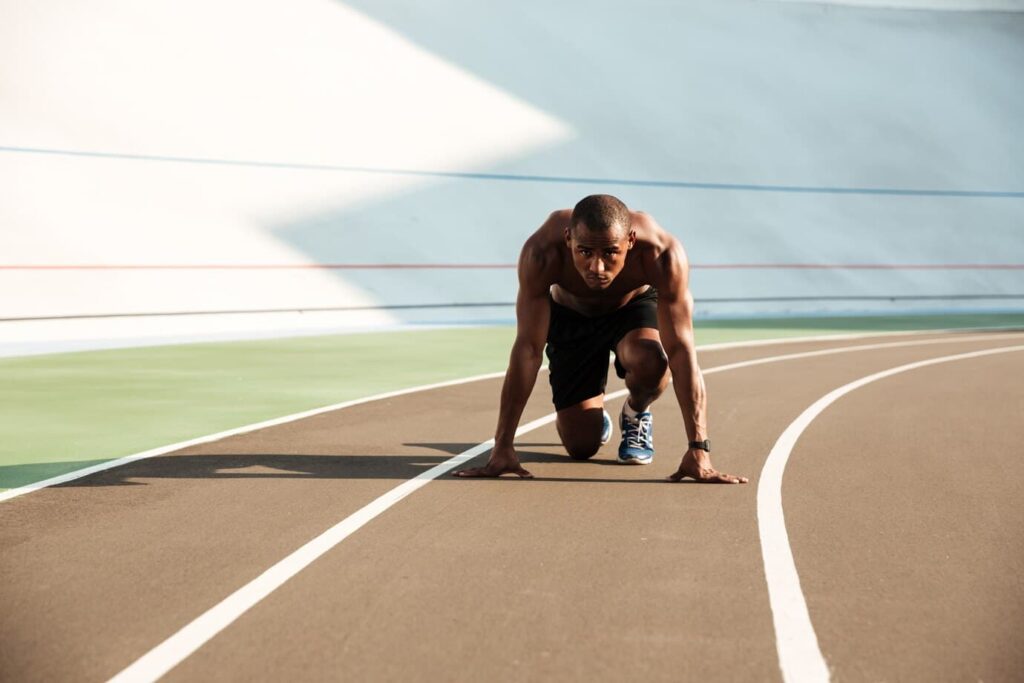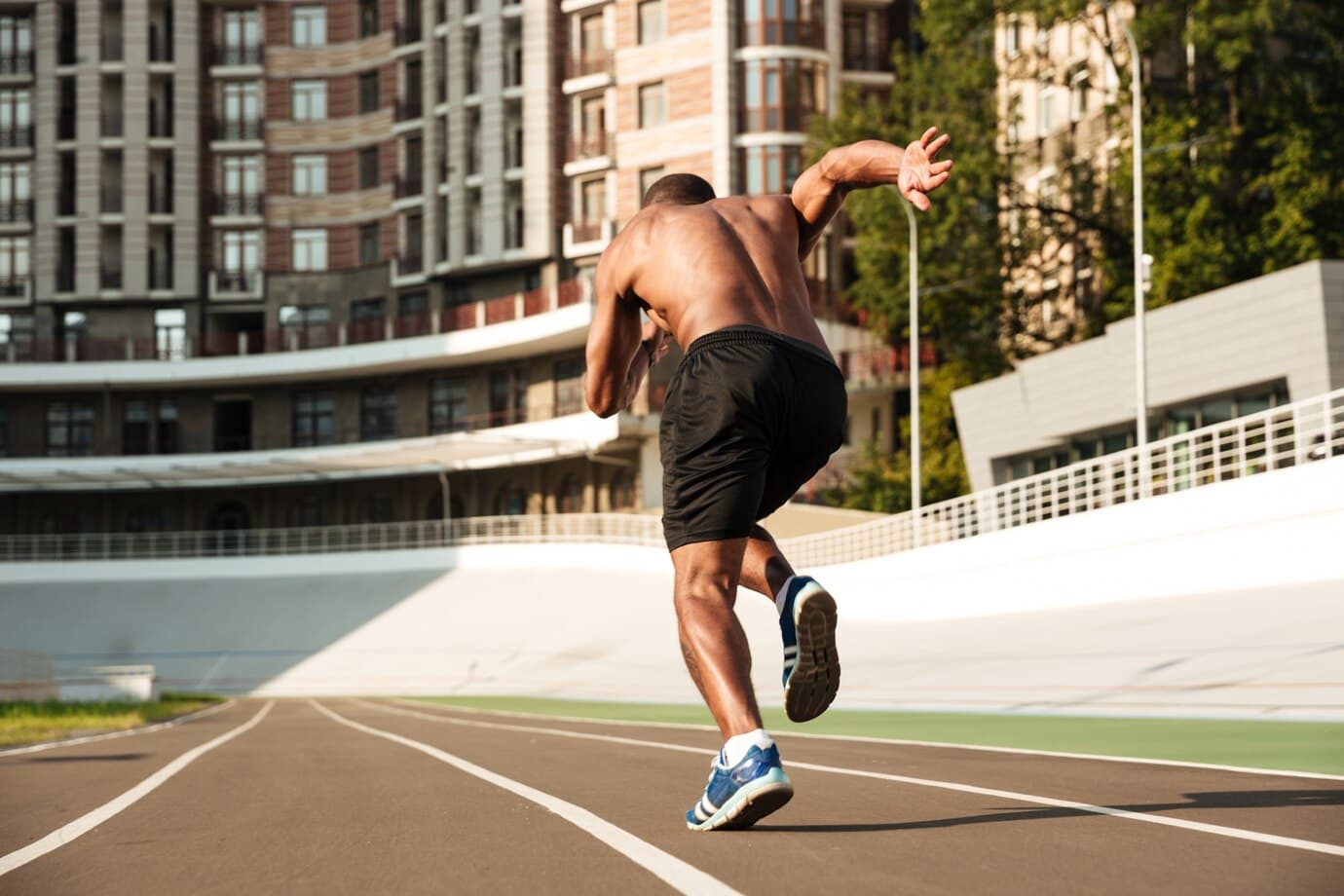The 100-meter dash is one of the purest spectacles in all of sports. A blur of motion, over in less than ten seconds, it appears to be an act of raw, untamed power. But beneath that explosive display lies a symphony of biomechanical precision. Every movement, from the initial push off the blocks to the final lean at the finish line, is a calculated application of physics and physiology. A world-class sprinter is not just a powerful athlete; they are a master of efficiency, turning explosive energy into forward velocity with minimal waste.
To truly appreciate the art of sprinting, we must look at it as a science. It is a complex process broken down into distinct, yet seamlessly integrated, phases: the explosive start, the powerful acceleration, and the desperate fight to maintain top speed. By deconstructing these components, we can understand how human beings are able to achieve such incredible feats of speed and what truly separates the elite from the merely fast.
The Start: A War Against Inertia
The sprint begins not with a step, but with an explosion. The primary goal of the start is to overcome inertia—the body’s natural resistance to movement—as quickly and powerfully as possible. This is where the starting blocks become critical. They are not simply footrests; they are platforms for an athlete to apply immense horizontal force into the ground. A good start is all about generating forward momentum, not upward lift.
In the “set” position, a sprinter’s body is a coiled spring. Their center of gravity is low, and their body angles are precise, optimized to drive forward. When the gun fires, the magic happens. The sprinter initiates what is known as “triple extension,” where the ankle, knee, and hip of the back leg extend almost simultaneously, creating a powerful chain reaction that propels the body forward. During these first few meters, known as the drive phase, the sprinter remains low to the ground. This low posture ensures that all the force they generate is directed horizontally down the track, rather than wasting energy by popping straight up. It’s a battle against physics, and winning it in the first two seconds is crucial for a successful race.
Acceleration: The Symphony of Stride and Frequency
Once out of the blocks, the sprinter enters the acceleration phase, arguably the most important part of the race. This is where they build up to their maximum velocity, a process that typically takes between 40 to 60 meters. The goal here is to smoothly transition from the low, powerful drive phase to a more upright running posture while continuing to build speed with every step. This involves a delicate interplay between two key variables: stride length and stride frequency.
It’s a common misconception that faster sprinters simply take longer strides. While stride length is important, over-striding is inefficient. Reaching too far forward with the lead foot actually creates a braking force upon ground contact, slowing the athlete down. Instead, elite sprinters focus on increasing their stride frequency (the number of steps they take per second) while maintaining an optimal stride length. They do this by applying massive force to the ground in an incredibly short amount of time—sometimes less than a tenth of a second per footfall. This powerful, piston-like leg action, combined with a gradual rise to an upright position, allows them to build momentum seamlessly. Their focus is on driving the ground down and away behind them, propelling them forward into the next powerful stride.
Maintaining Top Speed: The Science of Efficient Decay

No human can continue to accelerate for a full 100 meters. A sprinter hits their maximum velocity and then begins to decelerate. The winner of the race is not the person who is still accelerating at the end, but the one who slows down the least. This phase is a testament to an athlete’s neuromuscular efficiency and their ability to maintain near-perfect form under extreme fatigue.
At top speed, the sprinter appears to be floating, a picture of relaxed power. This relaxation is crucial, as any unnecessary tension, particularly in the face and shoulders, wastes energy that is desperately needed to maintain leg speed. The mechanics here are fine-tuned for maximum efficiency:
- Upright Posture: The torso is tall and stable, allowing the hips to remain in a neutral position for optimal power transfer.
- High Knee Drive: Knees are driven high and forward, putting the legs in a better position to apply force down into the track. This is often called “front-side mechanics.”
- Powerful Arm Action: The arms work in sync with the legs, driving forcefully from the shoulder to provide counterbalance and maintain stability. The hands move from “hip to lip.”
- Minimal Ground Contact Time: The feet strike the ground directly underneath the body’s center of gravity, on the balls of the feet, and pop off the track as quickly as possible.
Ultimately, the science of speed is a story of power and grace. It is the ability to generate explosive force and then channel it with the utmost efficiency. Every world-class sprinter is a living laboratory of human potential, demonstrating what is possible when raw talent is honed by thousands of hours of scientific, intentional practice. The next time you watch a 100-meter dash, look beyond the blur and appreciate the incredible biomechanical masterpiece unfolding with every step.


